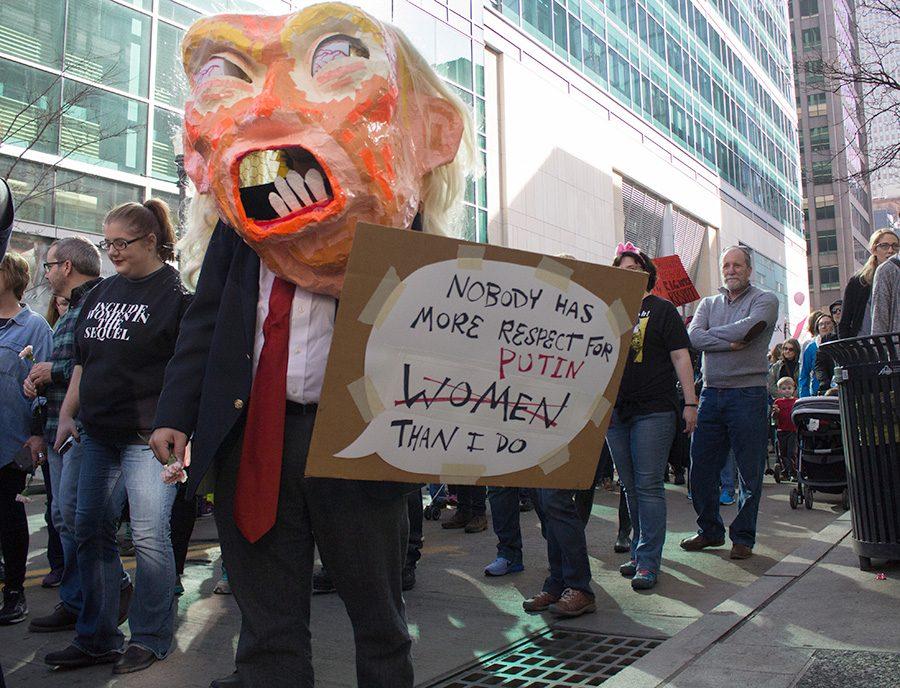Sister March draws 25,000 demonstrators to downtown
January 24, 2017
Point Park students and faculty joined a group of 25,000 protestors in the Sister March for Pittsburgh, a larger-than-expected demonstration against the inauguration of Donald Trump. This march was yet another in a series of Women’s Marches across the country.
Demonstrators with signs filled the streets of Pittsburgh as the estimated 25,000 participants in the Sister March for Pittsburgh paraded through downtown.
Organizers of the event requested a permit to protest a little over 24 hours before the march. The permit was only for 400 people, but the actual turnout was nearly 62 times that amount.
“This is wonderful,” said Pittsburgh mayor Bill Peduto. “I was absolutely blown away [when I first saw all of these people], I expected about a thousand people maximum.”
Marchers of all ages and genders met at the City-County Building at 11 a.m. to participate in the sister march of the Women’s March on Washington. Chants that began shortly after included “yes we can” along with “women’s rights are human rights”.
“I march because it makes a difference,” freshman dance major Marin Lomen said. “All these people are complaining about the next four years to come, but they aren’t doing anything about it. I march to bring attention to serious issues that have been going on far longer than this election.”
The women’s marches were not just held in the United States, but in every continent in the world. According to NBC News, about 600 sister marches surrounded the world to coincide with the Women’s March on Washington. These marches totaled up to millions of participants worldwide with the end goal of making a difference.
“I marched, did this same thing, when the Vietnam War was going on and it was stopped because of efforts like this,” said one protester, Marguerite Rafalko. “I believe that together we can accomplish anything.”
Teamwork was a common theme of the march, with speeches about sisterhood and signs that read “one struggle, one fight, all women must unite”.
All of the marchers had different stories and different reasons for protesting, from women’s rights to LGBT rights to the entirety of the Trump presidency.
“[I’m protesting] mostly because I’m against the Trump administration and everything it stands for,” freshman cinema production major Sarah Campbell said. “I feel like people don’t understand that there is a peaceful side of [the protests] because most media only shows the violence. I wanted to become part of the peaceful side.”
The Sister March for Pittsburgh began with police lining their path on Grant Street before continuing on to Fifth Avenue, Wood Street and finally stopping in Market Square for speeches by activists from around the area, including Mayor Peduto.
“Pittsburgh is a city that shares and shows love, and there are no laws that can take away compassion,” Peduto said in his speech.
“We’re going to roll up our sleeves and do what Pittsburghers do: we’re going to work hard and we’re going to make this the city for all. We’re going to be proud to show the rest of this country how a city can strive through compassion.”
Marchers that had then gathered continued to cheer on all of the speakers and sing songs led by a small band on the stage. This mirrored the other marches as well, with many celebrities speaking at the Women’s March on Washington, like Scarlett Johansson.
Although no A-list celebrities appeared in Pittsburgh, marchers felt the impact was just as great.
“I believe the march had a huge impact,” Lomen said. “It is said to be the biggest [inaugural] protest in U.S. history. I would say that’s pretty impactful.”


















